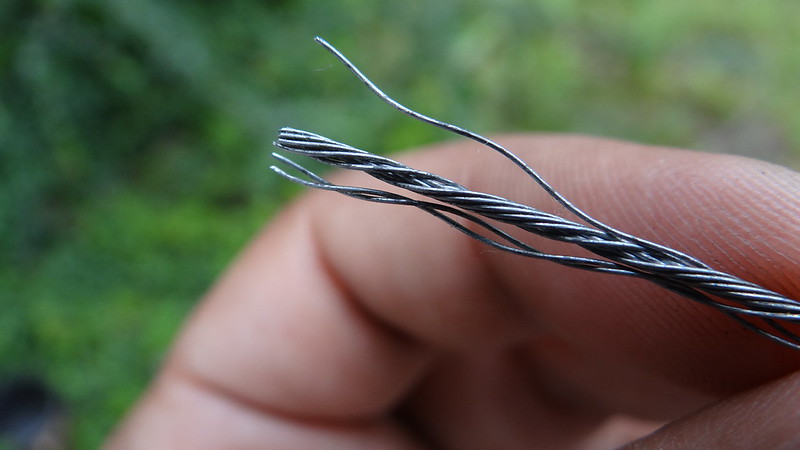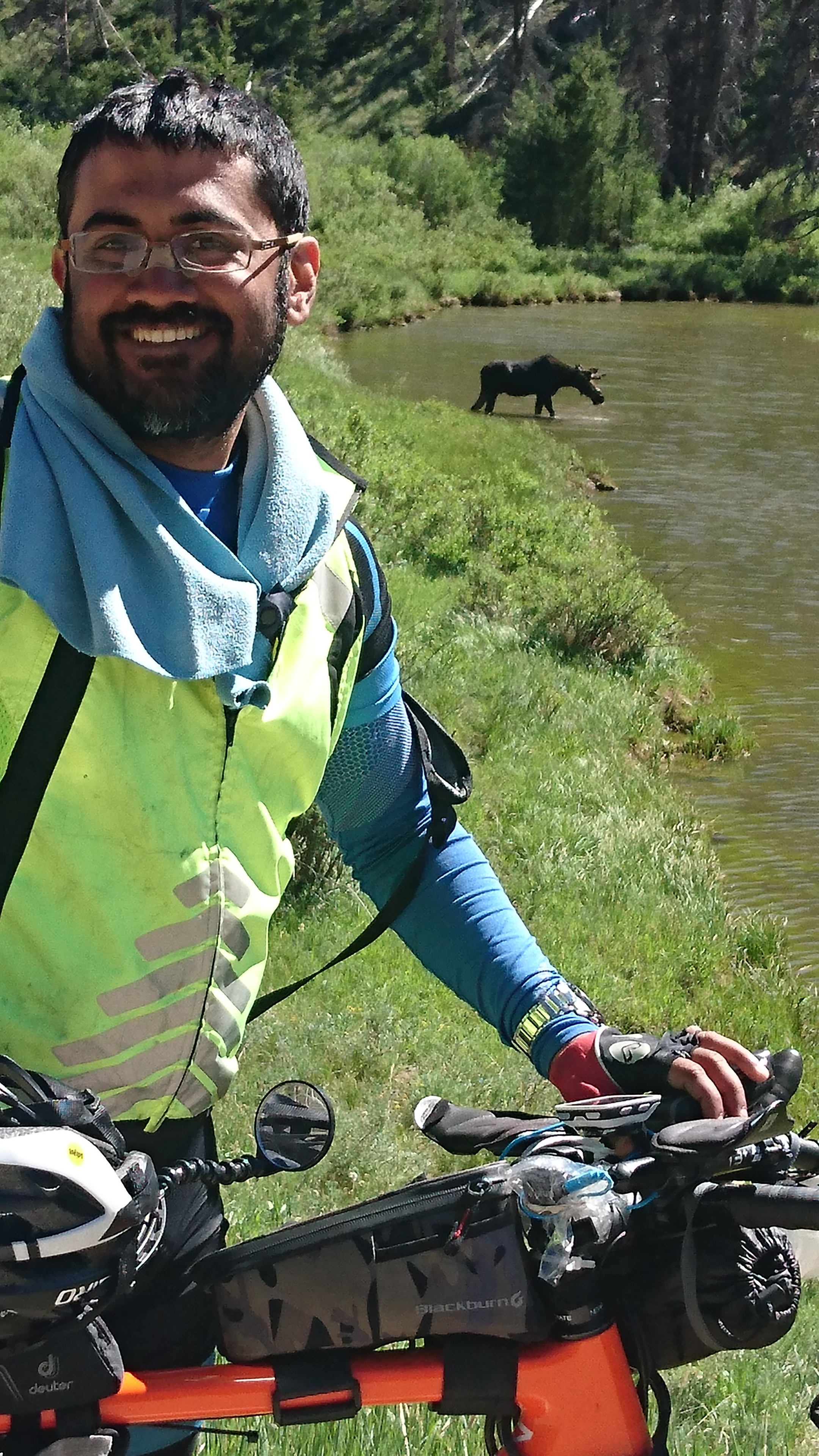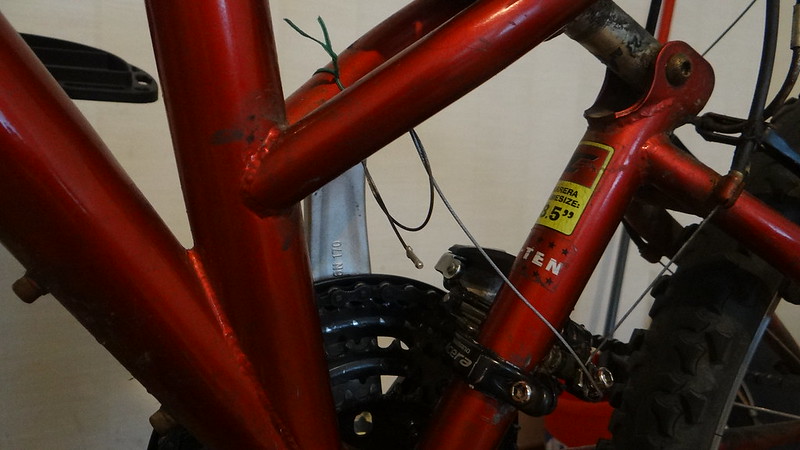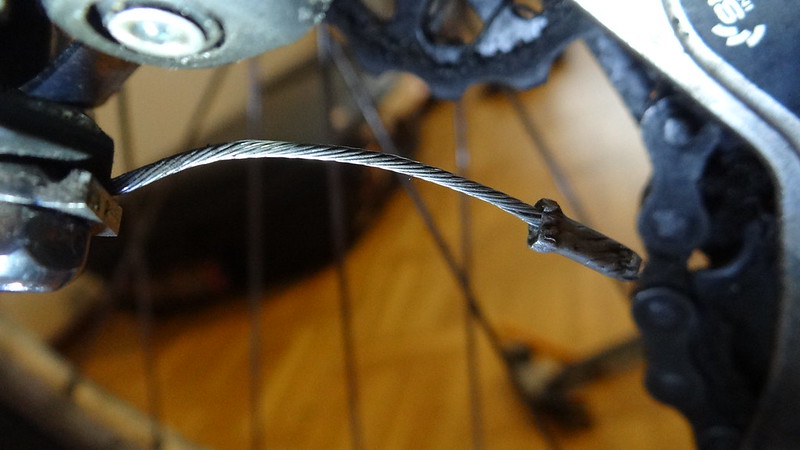Bicycle maintenance Inspecting cables for wear
I was riding home from work yesterday when I heard a sharp clack followed by the chain on my bike going off the crankset. Hmm. My gears and derailleurs get a lot of attention, so this was a completely unexpected problem. I clicked it right back in place by downshifting and rode right on. Upon reaching home, I checked and found the cause; the front derailleur cable which had a long section trailing off, had been rolled and tied in place by me with a piece of string (I hadn't done it with a proper cable tie). That string had come undone and the long cable had been pulled in between the chain and the crankset, leaving the end of the cable frayed. Now, a frayed cable is very bad as left unchecked, the cable then begins to unravel itself and before long, it weakens and snaps. I cut off the entire length of the frayed section with a cutting plier and found an unused cable end cap (new cables come with two or sometimes even three end caps) which I put on the cable's extremity and crushed it in place.
This done, I gave the other cables an inspection too. Cables can fray in two places; their extremities and the exposed section where they are outside the protective outer sleeve, with the extremity being the more common point of failure. Here's a small checklist to ensure that your cables last longer.
- Ensure that extra cable lengths are rolled away and properly fastened where it can't come in contact with either you or the bicycle's moving parts
- Ensure that all cable extremities have an end cap in place; end caps greatly reduce cable fray, thereby increasing cable life.
- If you spot frays at or near the end, cut the frayed portion right off and cap off the clean end with a cable end cap and crush the cap in place.
 This was the result of the cable getting into the chain when I was pedaling.
This was the result of the cable getting into the chain when I was pedaling.
- Check the exposed middle section of the cables, wherever they occur on your bike. You may want to smear a thin layer of grease on it, to prevent corrosion due to rain/snow.
- If you see the slightest bit of unraveling here, don't try to save the cable or delay the repair. A frayed strand can be extremely hard to get out, if it gets pulled into the cable's outer sleeve. Cut the frayed section off and then remove the rest of the cable and replace.
Wish you happy and trouble-free riding!



